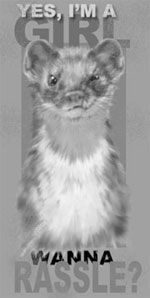More Boo!

Meet the lady from Grave 6705 in the bronze age city of Shahr-i Sokhta, now southern Iran. She died between 2900 and 2800 BC. She may have been a foreigner. She was aged between 28 and 35. She was surrounded by rich grave goods. She was six feet tall.
AND SHE HAD A FALSE EYE. Earliest found so far. It wasn’t a sphere; she wore it like an eye patch. It was made out of pitch and animal fat, so it is now black, but some specks of white paint on the surface means it may have been painted white like an eyeball. It was inlaid with fine gold wires radiating from the center, and there are some incised squiggly lines that may be imitation capillaries. I’m unclear whether they were inlaid.
It wasn’t a grave good; she wore it in life for quite a long time. There were two little holes where fine threads attached and held it in place. Both the prosthetic and the threads left marks on her bones. In fact, it looks like she had an abscess possibly caused by this thing.
That’s all we know and that’s cool enough.
But it’s been reported that she was a noblewoman or a priestess and she used the eye to convince people she could see into the future. Which is fun and all, but there’s not a scrap of evidence.
It’s part of an odd contradiction I’ve found since I’ve gotten interested in prehistory. We have never had better tools to examine the past. Radiocarbon dating, DNA testing, chemical analysis of teeth and other organic finds, ground penetrating radar, aerial analysis – it’s simply stunning the good, hard data we can glean now.
But the reports often come packaged with completely unsusbtantiated, fanciful conclusions. I mean, the official reports do (don’t get me started on where journalists go). I mean, we all like to speculate, sure. Maybe if you do the hard work to get a PhD in prehistory, your reward is that your wild-ass guesses get listened to.
February 23, 2021 — 9:32 pm
Comments: 9












